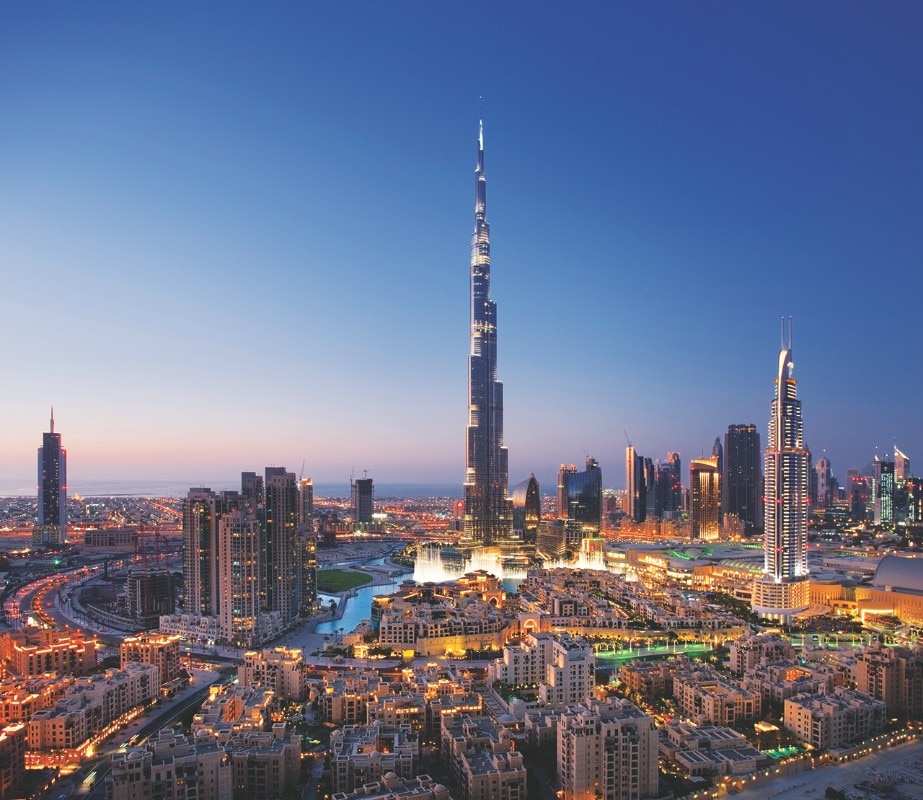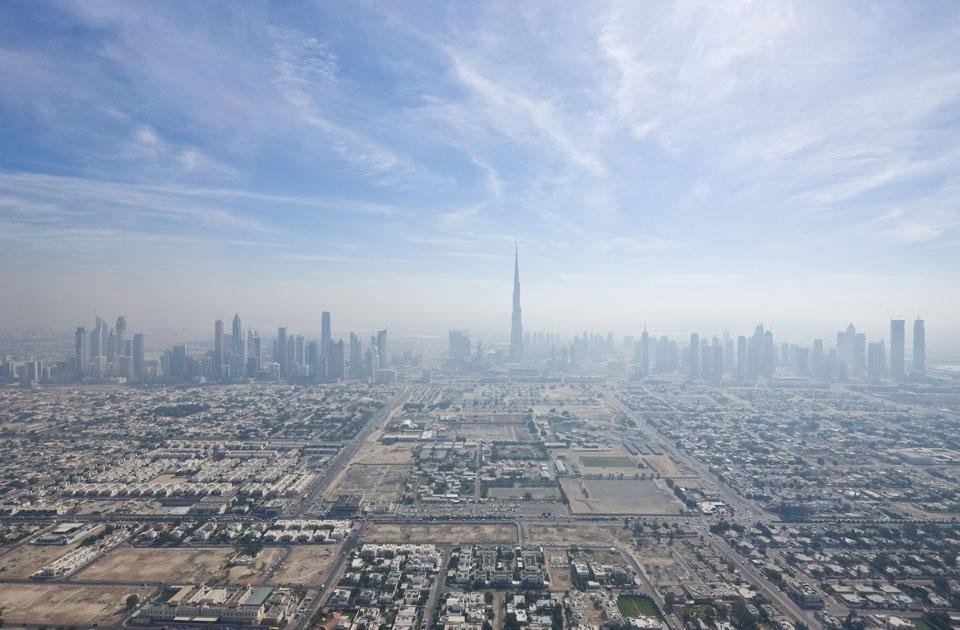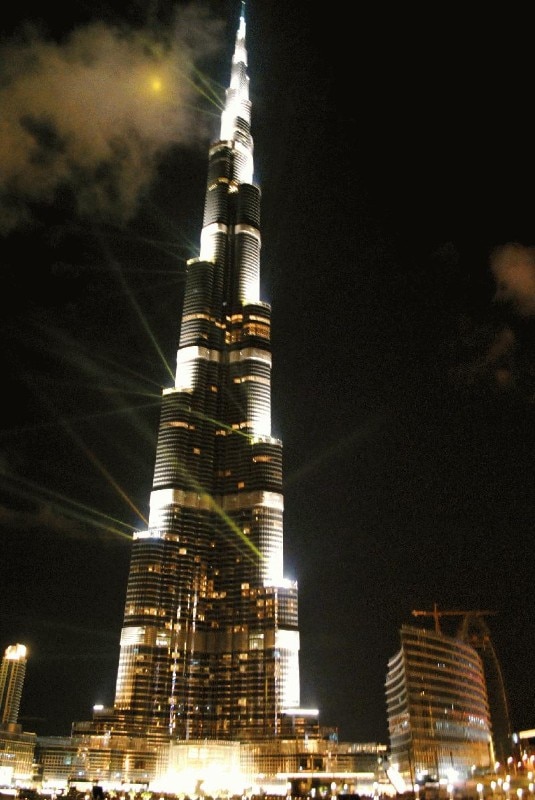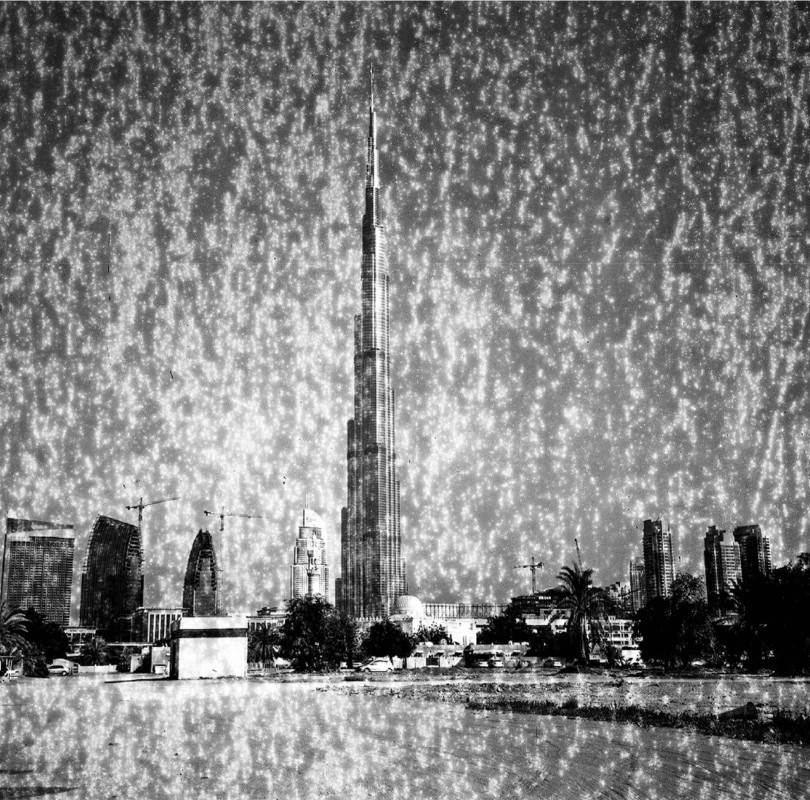Currently the tallest building in the world reaching a 828 metres height, the Burj Khalifa was born as Burj Dubai — and later dedicated to the EAU president — commissioned by the Emir of Dubai to the global leading firm SOM Skidmore, Owinga and Merrill, in 2002, during the relaunch of the Emirate as a financial and real estate prime player. Its long list of records and awards includes a role as a first experiment in Dubai to put an icon-tower (burj means tower in Arabic) as the core and empowering engine for an urban masterplan of an unprecedentedly large scale.
Burj Khalifa is a mixed-use building hosting an office block, housing and a luxury hotel , the Armani Hotel, on an overall extent of 158 stories; each functional section has its own pavilion-lobby, providing the complementary function of protecting people from the powerful downdrafts descending the façade. The building is surrounded by a park hosting different facilities for both users and inhabitants, and by a promenade opening on the nearby lagoon (the scale is so large that the project was presented as surrounded by real boulevards).
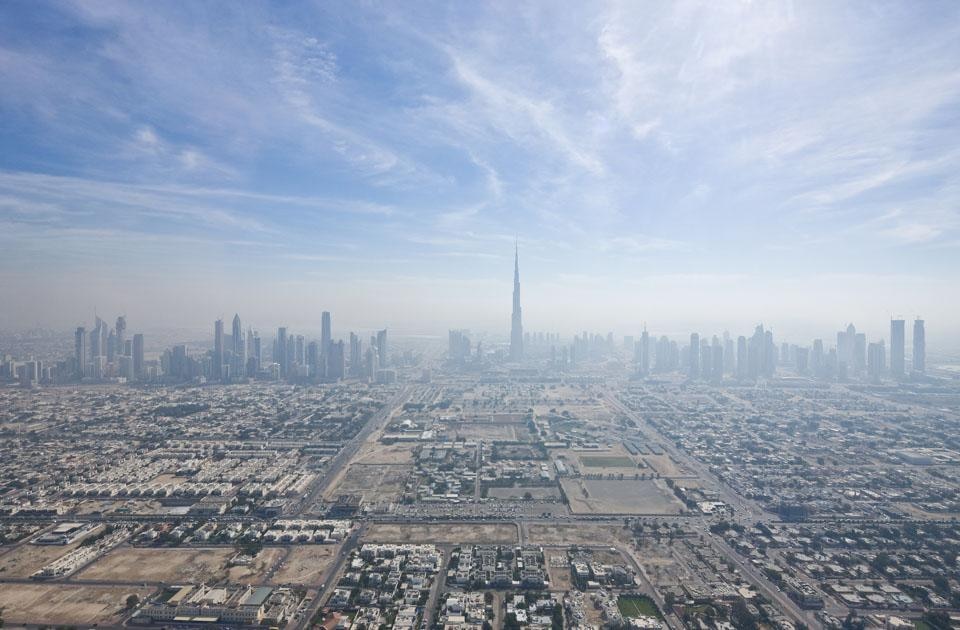
 View gallery
View gallery
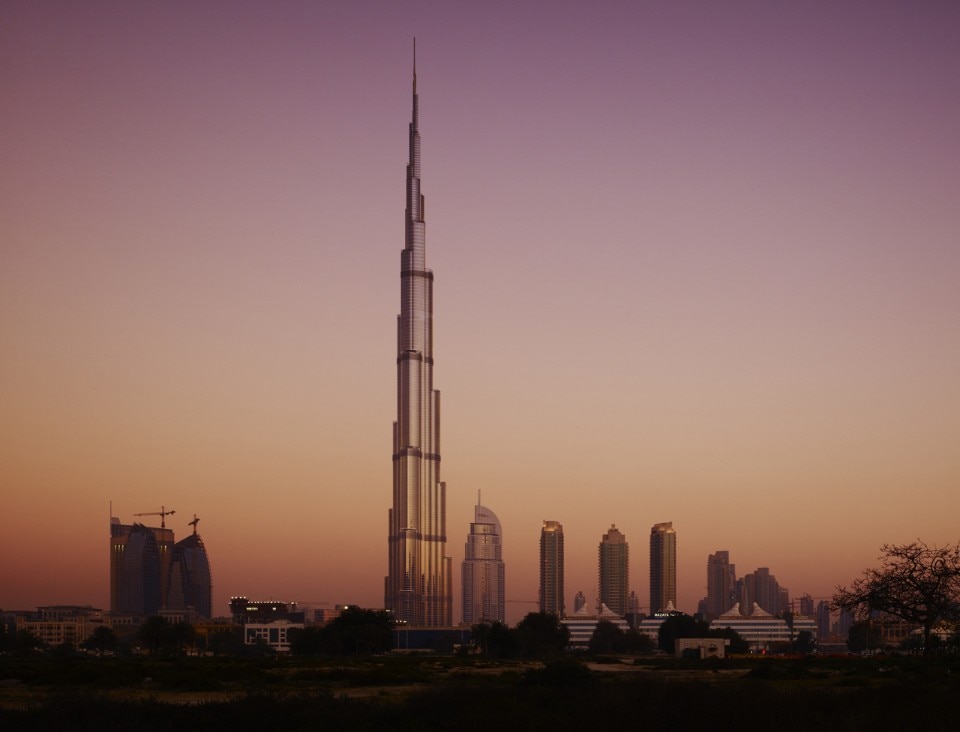
Skidmore, Owings and Merrill, Burj Khalifa, Dubai, 2010. Urban view. Photo: Nick Merrick for Hedrich Blessing. Courtesy SOM
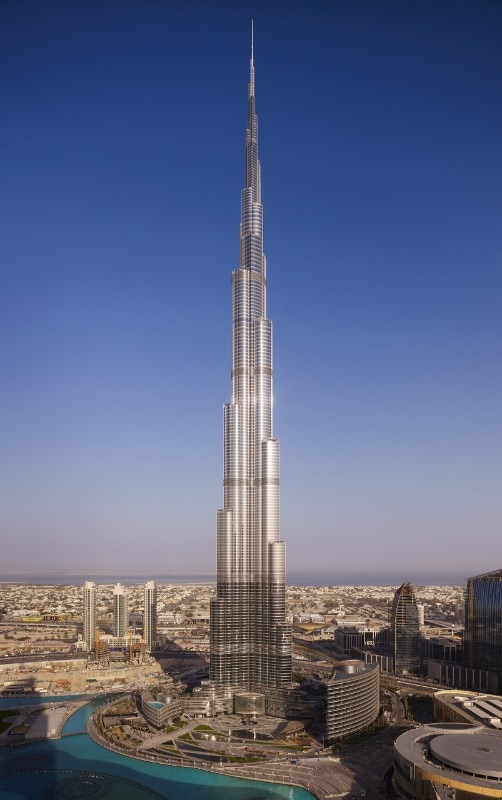
Skidmore, Owings and Merrill, Burj Khalifa, Dubai, 2010. View from the urban context. Photo: Nick Merrick per Hedrich Blessing. Courtesy SOM
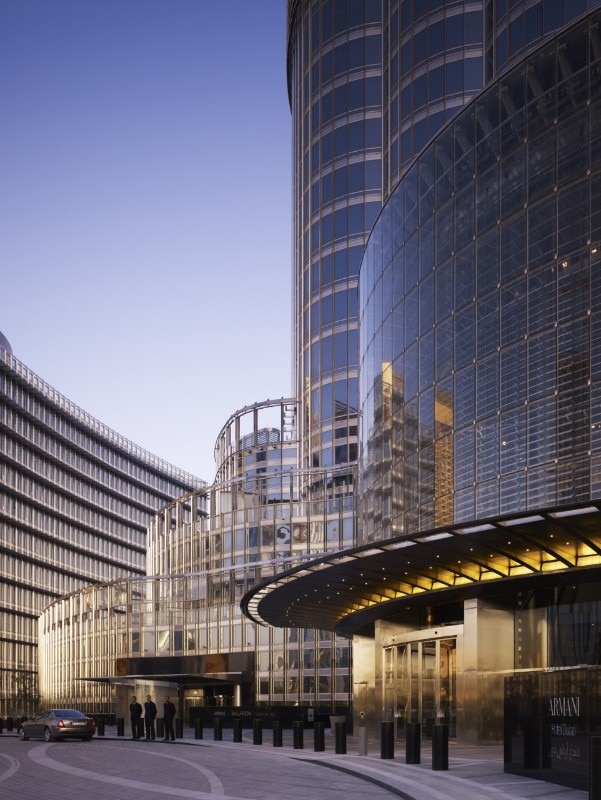
Skidmore, Owings and Merrill, Burj Khalifa, Dubai, 2010. Exterior view. Photo: Nick Merrick for Hedrich Blessing. Courtesy SOM
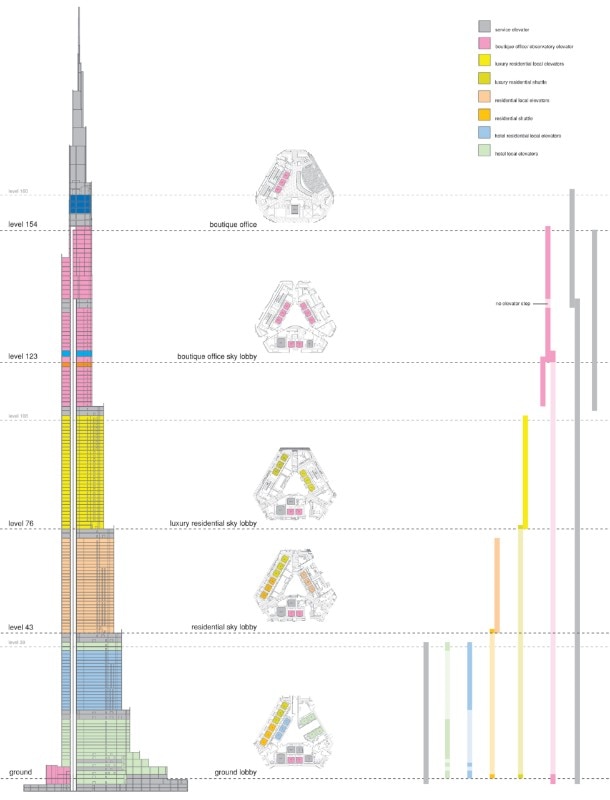
Skidmore, Owings and Merrill, Burj Khalifa, Dubai, 2010. Elevator section with functional scheme. Courtesy SOM
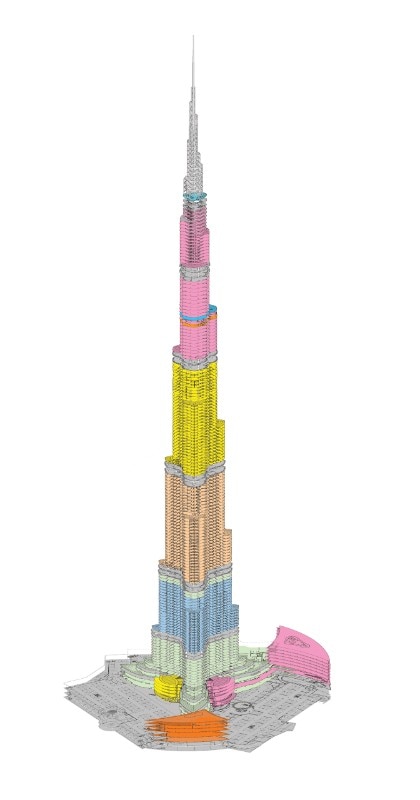
Skidmore, Owings and Merrill, Burj Khalifa, Dubai, 2010. Axonometric program scheme. Courtesy SOM
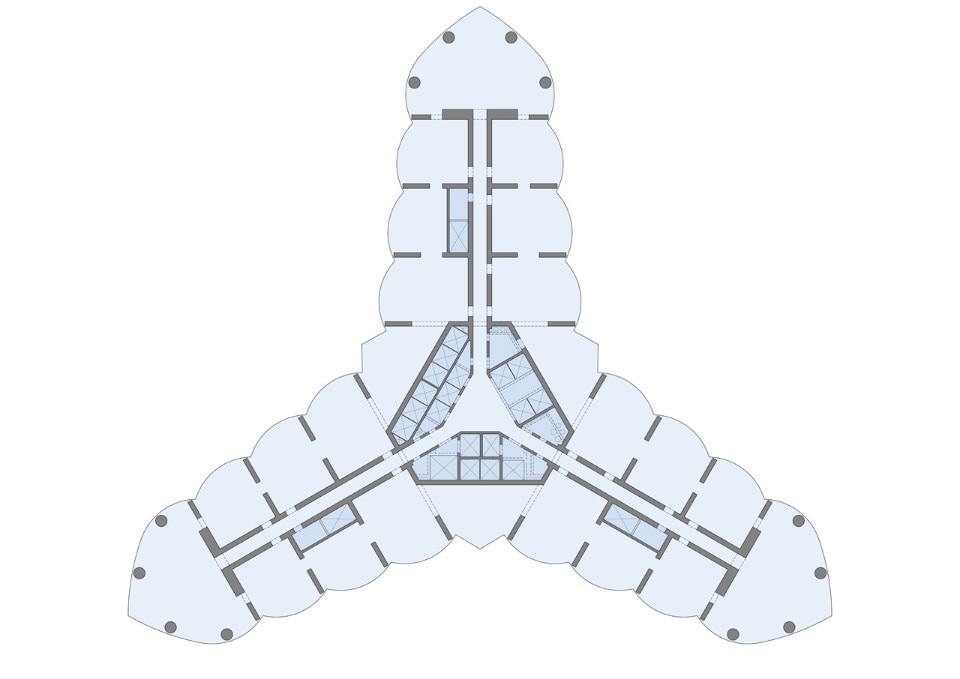
Skidmore, Owings and Merrill, Burj Khalifa, Dubai, 2010. Typical floor plan. Courtesy SOM
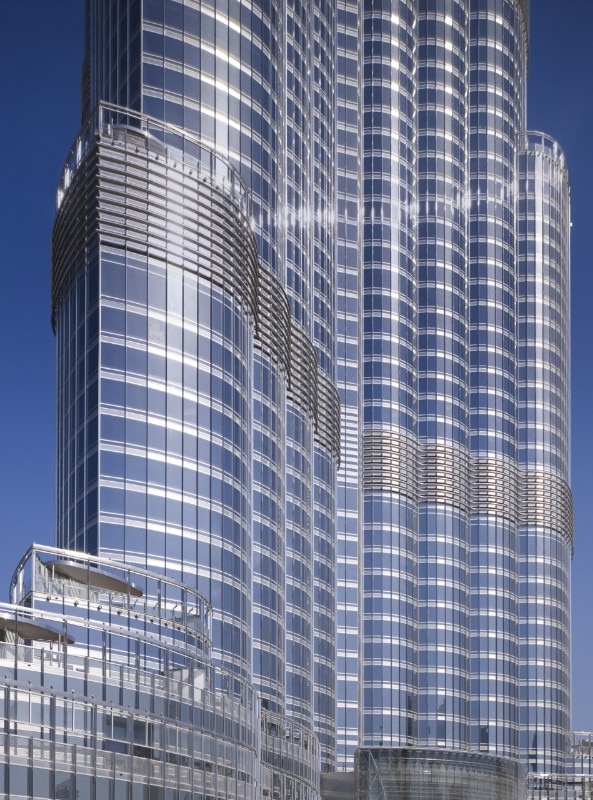
Skidmore, Owings and Merrill, Burj Khalifa, Dubai, 2010. The façade system and the clustered cylindric volumes. Photo: Nick Merrick for Hedrich Blessing. Courtesy SOM
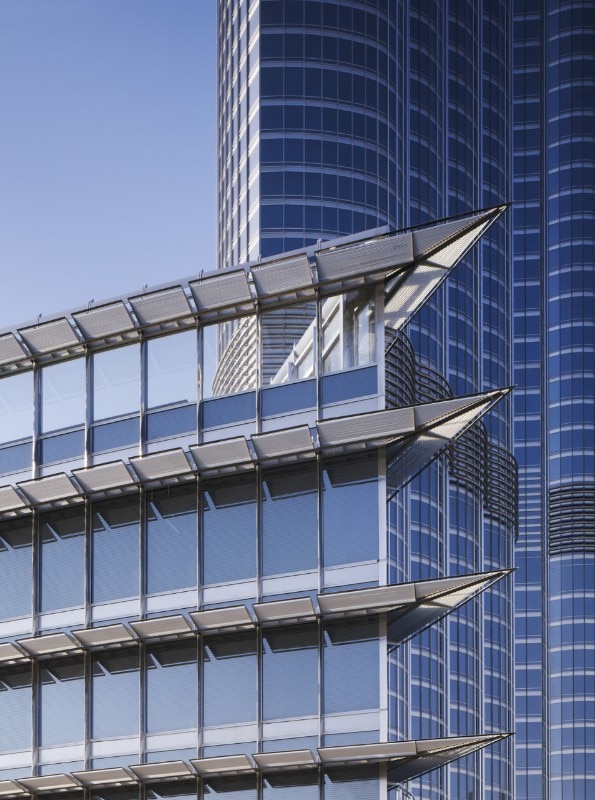
Skidmore, Owings and Merrill, Burj Khalifa, Dubai, 2010. Detail of the façade systems. Photo: Nick Merrick for Hedrich Blessing. Courtesy SOM
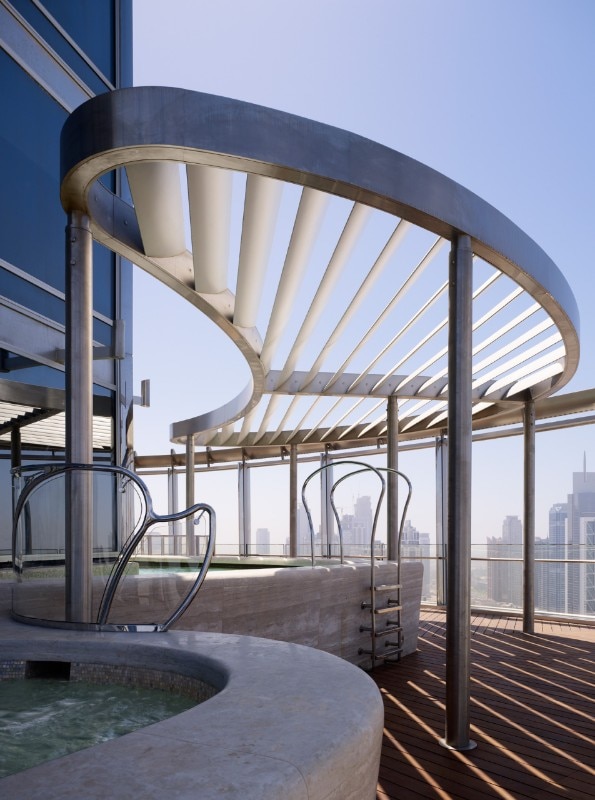
Skidmore, Owings and Merrill, Burj Khalifa, Dubai, 2010. View on a terrace. Photo: Nick Merrick for Hedrich Blessing. Courtesy SOM
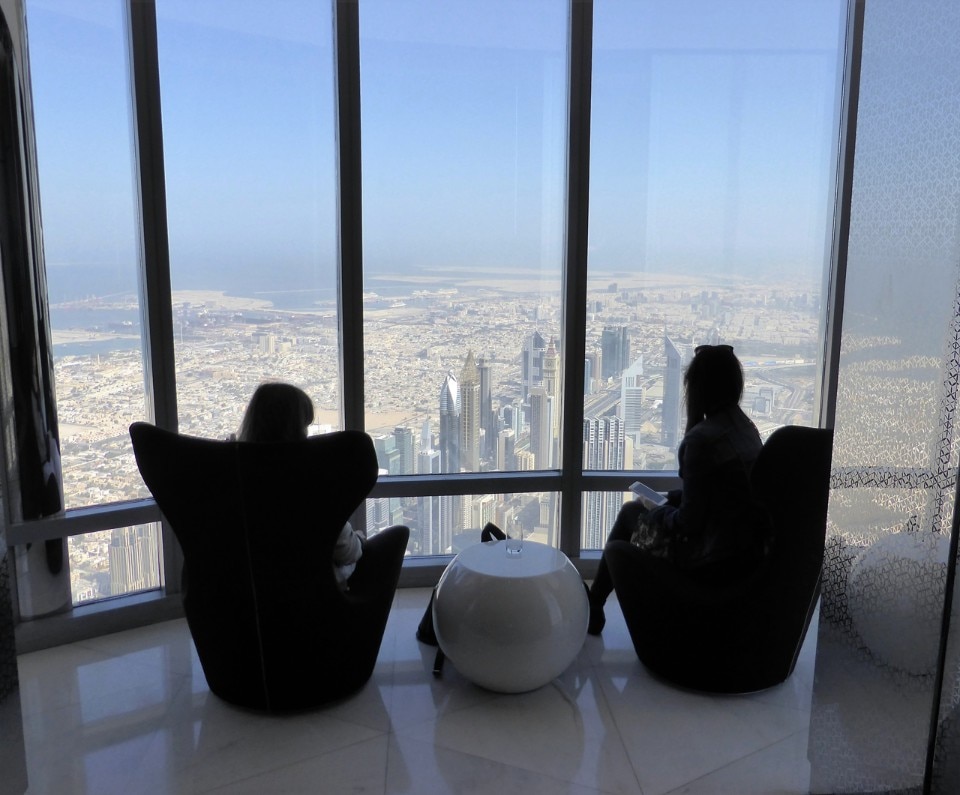
Skidmore, Owings and Merrill, Burj Khalifa, Dubai, 2010. The view from the panoramic deck. Photo: Pxhere
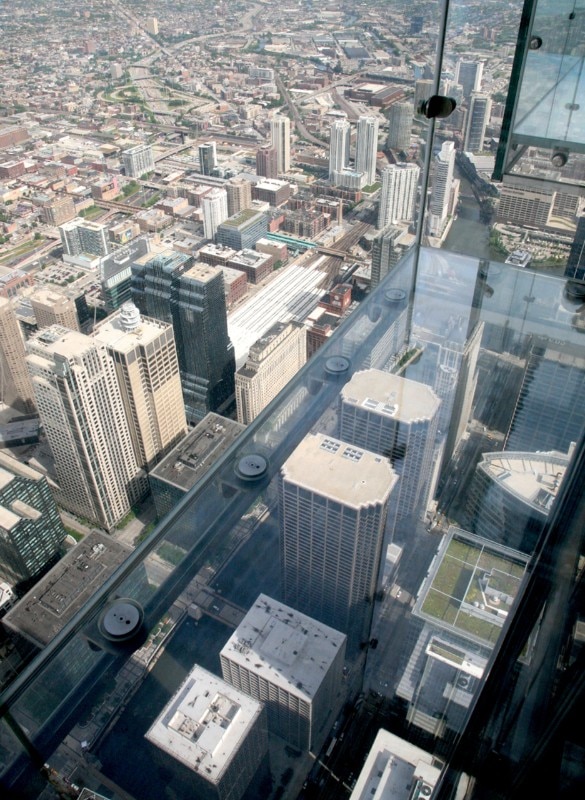
Skidmore, Owings and Merrill, Burj Khalifa, Dubai, 2010. The view from the panoramic deck. Photo: Pxhere
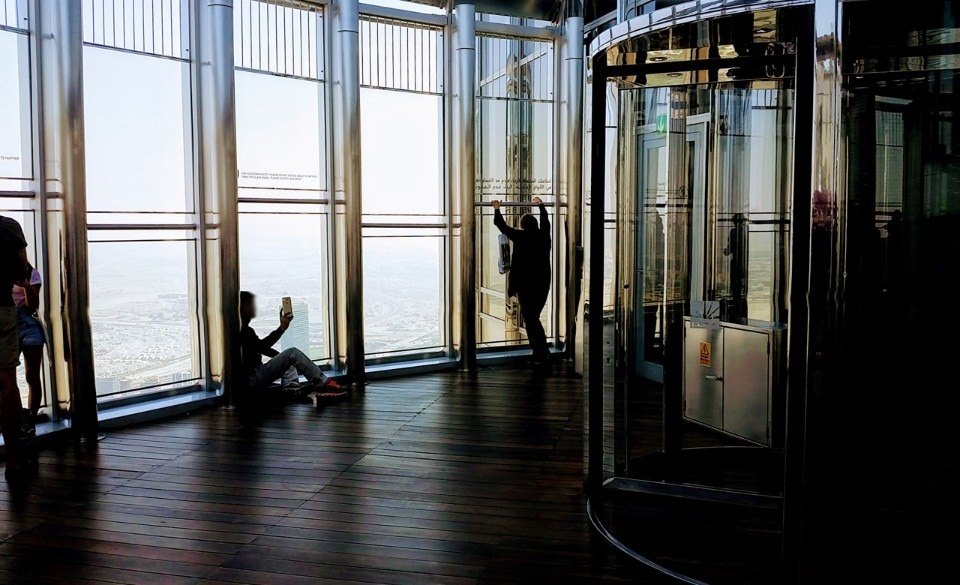
Skidmore, Owings and Merrill, Burj Khalifa, Dubai, 2010. Interior view of the panoramic deck. Photo: Pxhere
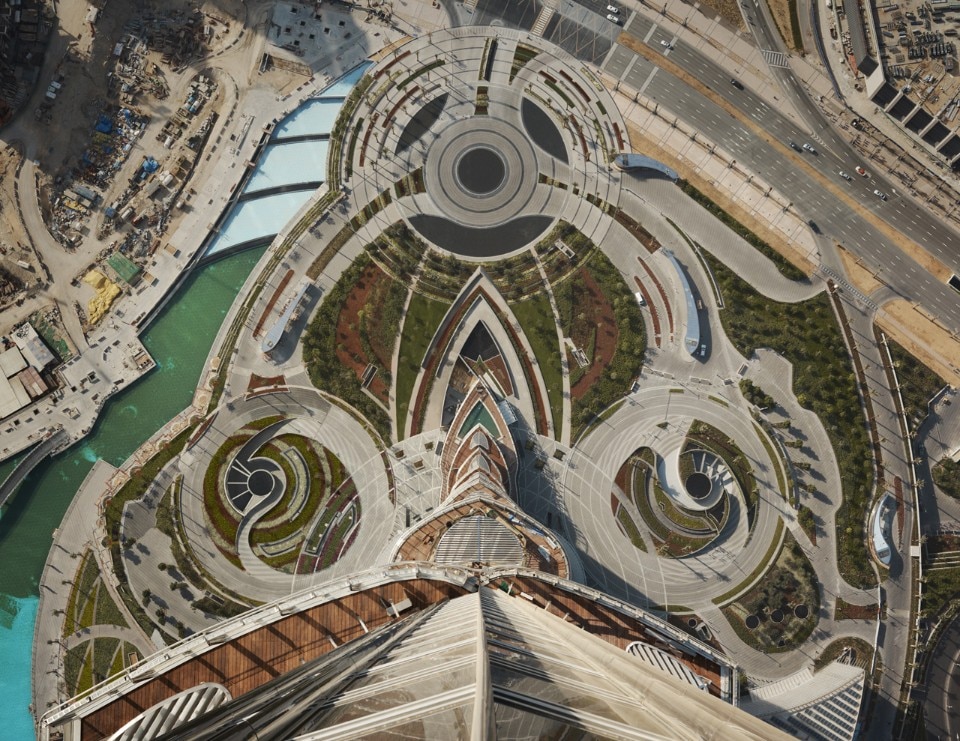
Skidmore, Owings and Merrill, Burj Khalifa, Dubai, 2010. View of the garden from the tower. Photo: Nick Merrick for Hedrich Blessing. Courtesy SOM
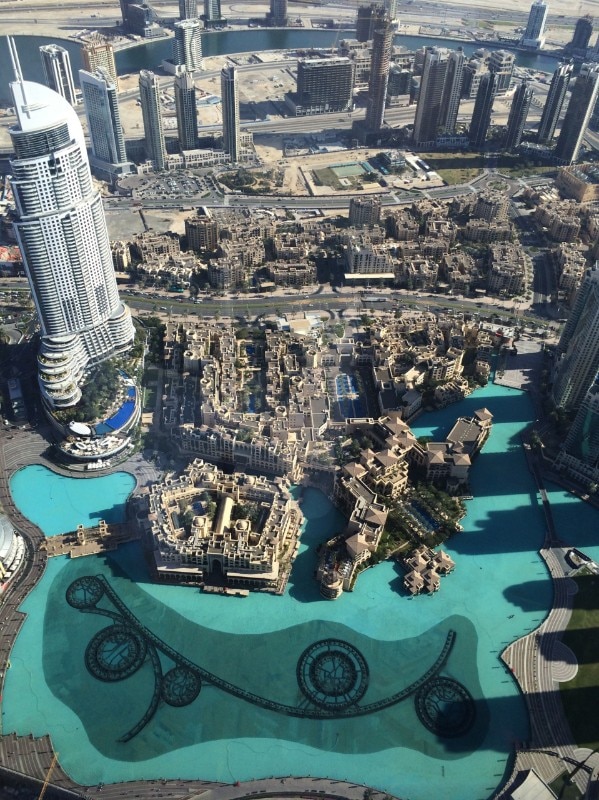
Skidmore, Owings and Merrill, Burj Khalifa, Dubai, 2010. View of the inland lagoon nearby the tower . Photo: Pxhere
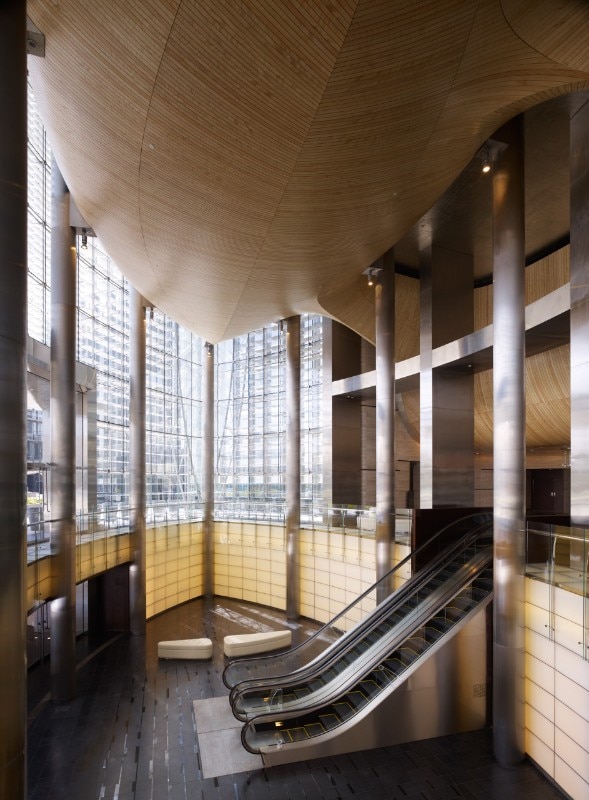
Skidmore, Owings and Merrill, Burj Khalifa, Dubai, 2010. Interior view of an access pavilion. Photo: Nick Merrick for Hedrich Blessing. Courtesy SOM
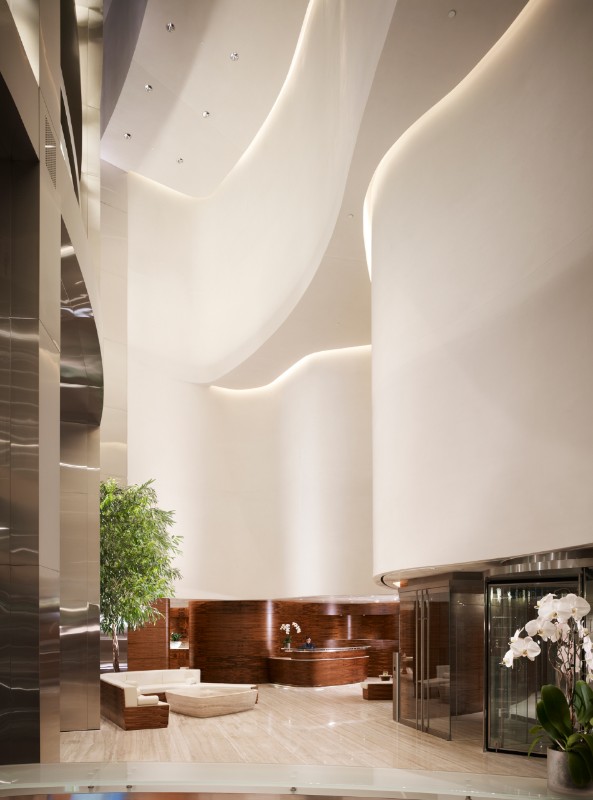
Skidmore, Owings and Merrill, Burj Khalifa, Dubai, 2010. Interior view of the residential block lobby. Photo: Nick Merrick for Hedrich Blessing. Courtesy SOM
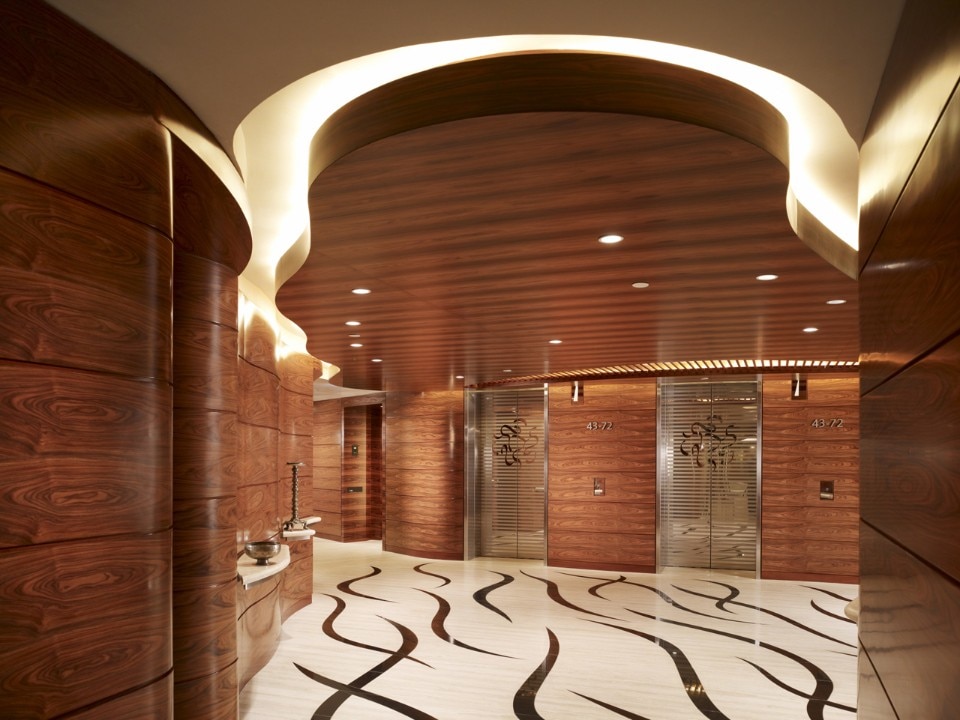
Skidmore, Owings and Merrill, Burj Khalifa, Dubai, 2010. Interior view. Photo: Nick Merrick for Hedrich Blessing. Courtesy SOM
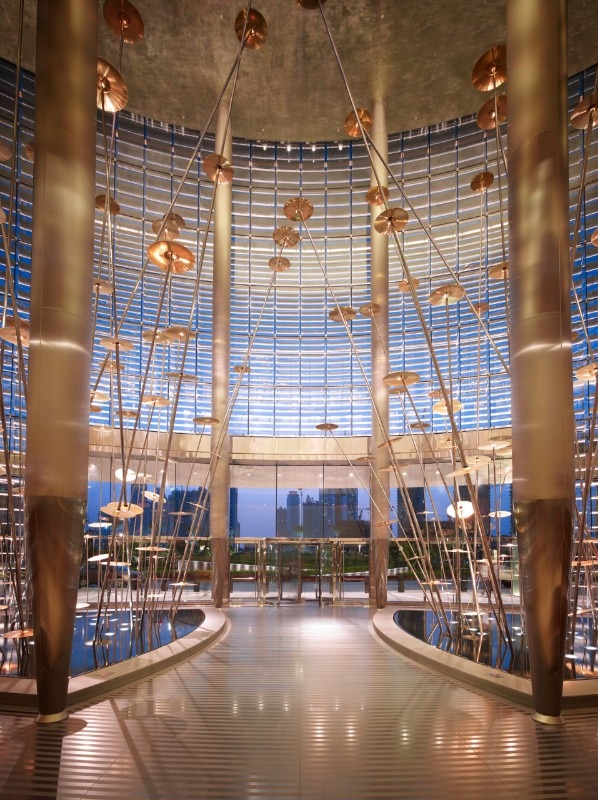
Skidmore, Owings and Merrill, Burj Khalifa, Dubai, 2010. Interior view. Photo: Nick Merrick for Hedrich Blessing. Courtesy SOM

Skidmore, Owings and Merrill, Burj Khalifa, Dubai, 2010. Urban view. Photo: Nick Merrick for Hedrich Blessing. Courtesy SOM

Skidmore, Owings and Merrill, Burj Khalifa, Dubai, 2010. View from the urban context. Photo: Nick Merrick per Hedrich Blessing. Courtesy SOM

Skidmore, Owings and Merrill, Burj Khalifa, Dubai, 2010. Exterior view. Photo: Nick Merrick for Hedrich Blessing. Courtesy SOM

Skidmore, Owings and Merrill, Burj Khalifa, Dubai, 2010. Elevator section with functional scheme. Courtesy SOM

Skidmore, Owings and Merrill, Burj Khalifa, Dubai, 2010. Axonometric program scheme. Courtesy SOM

Skidmore, Owings and Merrill, Burj Khalifa, Dubai, 2010. Typical floor plan. Courtesy SOM

Skidmore, Owings and Merrill, Burj Khalifa, Dubai, 2010. The façade system and the clustered cylindric volumes. Photo: Nick Merrick for Hedrich Blessing. Courtesy SOM

Skidmore, Owings and Merrill, Burj Khalifa, Dubai, 2010. Detail of the façade systems. Photo: Nick Merrick for Hedrich Blessing. Courtesy SOM

Skidmore, Owings and Merrill, Burj Khalifa, Dubai, 2010. View on a terrace. Photo: Nick Merrick for Hedrich Blessing. Courtesy SOM

Skidmore, Owings and Merrill, Burj Khalifa, Dubai, 2010. The view from the panoramic deck. Photo: Pxhere

Skidmore, Owings and Merrill, Burj Khalifa, Dubai, 2010. The view from the panoramic deck. Photo: Pxhere

Skidmore, Owings and Merrill, Burj Khalifa, Dubai, 2010. Interior view of the panoramic deck. Photo: Pxhere

Skidmore, Owings and Merrill, Burj Khalifa, Dubai, 2010. View of the garden from the tower. Photo: Nick Merrick for Hedrich Blessing. Courtesy SOM

Skidmore, Owings and Merrill, Burj Khalifa, Dubai, 2010. View of the inland lagoon nearby the tower . Photo: Pxhere

Skidmore, Owings and Merrill, Burj Khalifa, Dubai, 2010. Interior view of an access pavilion. Photo: Nick Merrick for Hedrich Blessing. Courtesy SOM

Skidmore, Owings and Merrill, Burj Khalifa, Dubai, 2010. Interior view of the residential block lobby. Photo: Nick Merrick for Hedrich Blessing. Courtesy SOM

Skidmore, Owings and Merrill, Burj Khalifa, Dubai, 2010. Interior view. Photo: Nick Merrick for Hedrich Blessing. Courtesy SOM

Skidmore, Owings and Merrill, Burj Khalifa, Dubai, 2010. Interior view. Photo: Nick Merrick for Hedrich Blessing. Courtesy SOM
The design of the tower is guided by different factors, both formal and functional: the reference to fractal forms of desert flowers, the typical patterns and shapes of Arab and Islamic architecture, the articulation in multiple volumes aiming to maximize the surface of the façade and the gulf views, as declared by designers. Before the Dubai real estate crisis of 2009, views had a double value: the view from the skyscraper would an exclusive asset to the building itself, and the view on the skyscraper would grant the surrounding buildings a higher value.
The shape is radically characterized by structural choices in their combination with living spaces. The building is structured by a concrete frame, articulated around a central hexagonal core, a buttressed core, surrounded stiffened by three lateral wings, rising up to the 156th floor, where a steel structure originates the 213 meters high spire. Satellite towers articulate around the principal elevation, rising up to different heights so that the sequence of setbacks can create the movement of a counterclockwise ascending spiral.
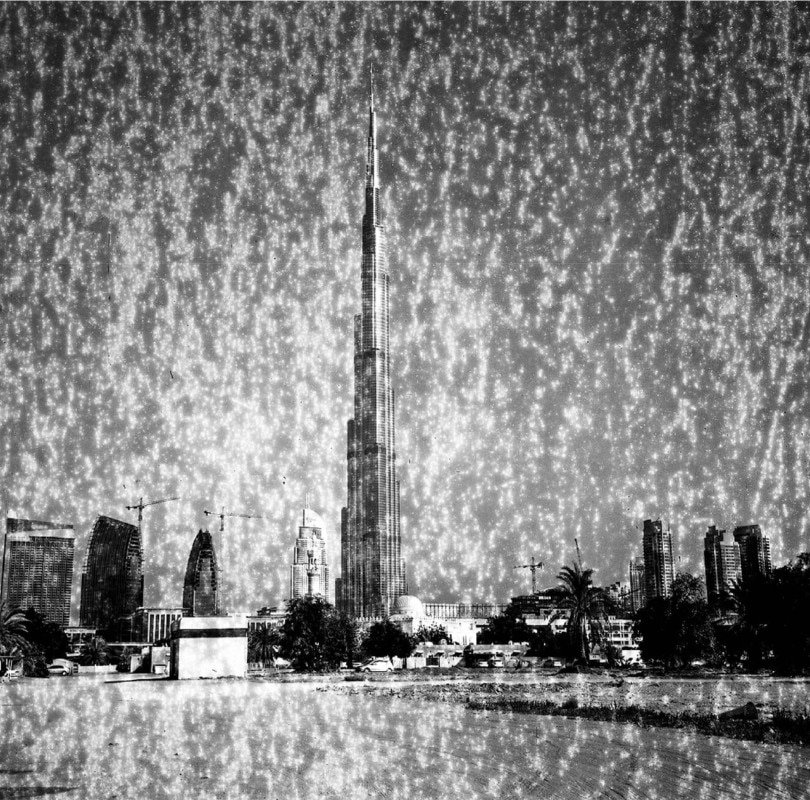
The construction started in 2004 and ended in 2009, culminating in the grand opening of January 2010, when the skyscraper by SOM got to gain the mentioned large amount of records, and to stand out as a reference for its construction typology. While it can feature the highest place of worship in the world (a mosque, located on the 158th floor), Burj Khalifa constituted, by the time of its opening, also a construction experiment (it is the tallest concrete structure in the world) and a technological experiment: the interior climate comfort is granted by a glazed envelope, a double- layered continuous curtain wall; a natural ventilation system was also characterizing the project, collecting cooler and less humid air down from the top of the building , as well as a water recycling system, trapping the condense from the façade surface and providing almost the 20% of the water supply for the whole building.


